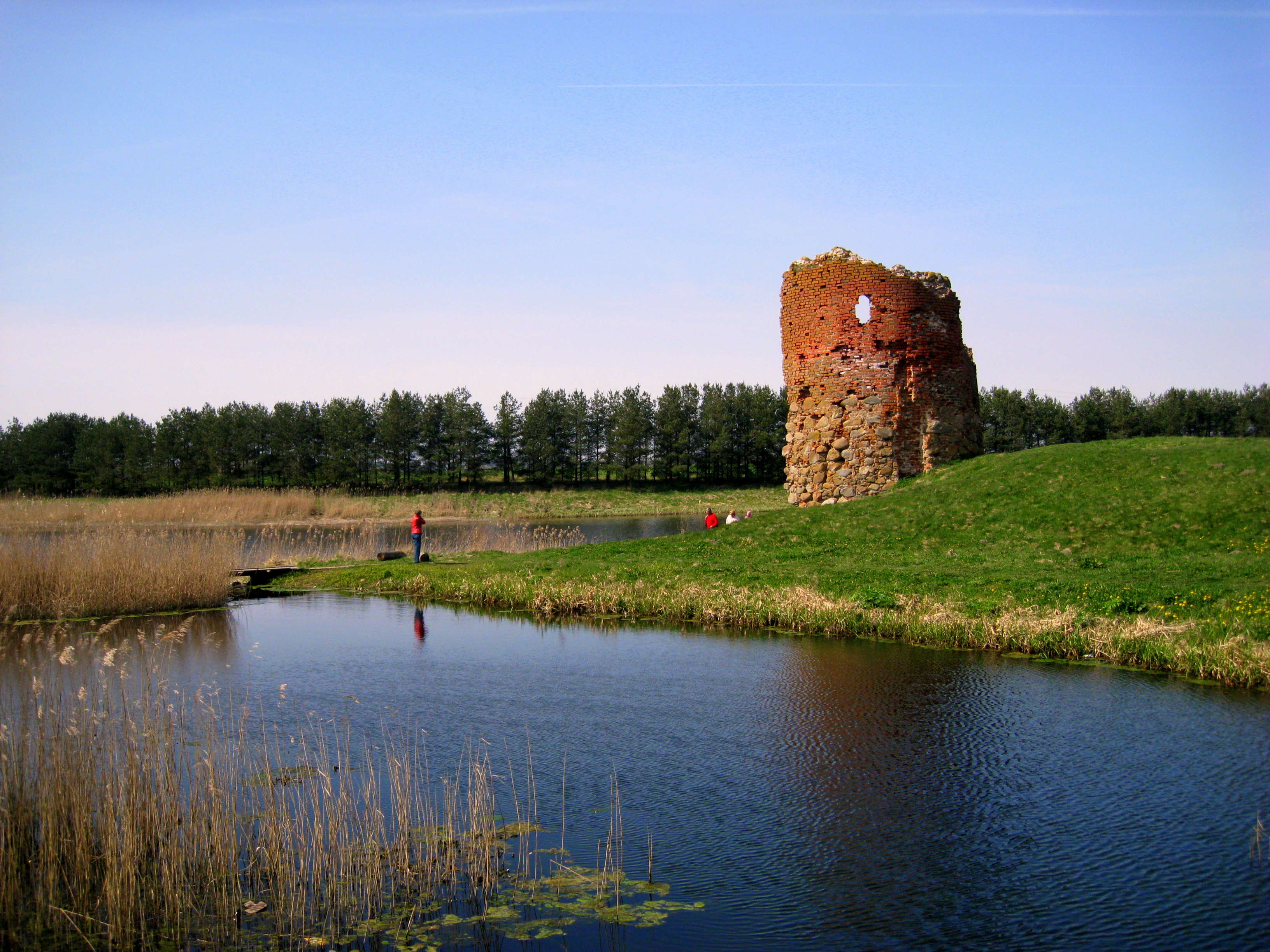Piltene gerb.png on:
[Wikipedia]
[Google]
[Amazon]
Piltene (; pl, Piltyń, german: Pilten) is a
 *1220: King
*1220: King
town
A town is a human settlement. Towns are generally larger than villages and smaller than cities, though the criteria to distinguish between them vary considerably in different parts of the world.
Origin and use
The word "town" shares an ori ...
in northwestern Latvia. The population in 2020 was 909.
The ruins of Piltene Castle
Piltene Castle is a Bishopric of Courland castle in the town of Piltene in the historical region of Courland, in western Latvia. Until the 16th century it served as a capital of Bishopric of Courland.
History
As part of the Northern crusades ...
are located in Piltene.
Population
Population (Year): 40,000 (1795)History
 *1220: King
*1220: King Valdemar II of Denmark
Valdemar (28 June 1170 – 28 March 1241), later remembered as Valdemar the Victorious (), was the King of Denmark (being Valdemar II) from 1202 until his death in 1241.
Background
He was the second son of King Valdemar I of Denmark and Sophi ...
erects a castle on the site.
*September 1234: Bishopric of Courland
The Bishopric of Courland ( la, Episcopatus Curoniensis, Low German: ''Bisdom Curland'') was the second smallest (4500 km2) ecclesiastical state in the Livonian Confederation founded in the aftermath of the Livonian Crusade. During the Livo ...
(Bistum Kurland) established (formally declared on 11 February 1232), consisting of three separate enclaves after numerous distributions of the Couronian lands among the Bishops of Courland, and of Riga, and the Teutonic Order
The Order of Brothers of the German House of Saint Mary in Jerusalem, commonly known as the Teutonic Order, is a Catholic religious institution founded as a military society in Acre, Kingdom of Jerusalem. It was formed to aid Christians on ...
.
:''Note'': the bishops were also rulers of the island of Runö (now Ruhnu
Ruhnu ( sv, Runö; german: Runö; lv, Roņu sala) is an Estonian island in the Gulf of Riga in the Baltic Sea. It is administratively part of Saare County but is geographically closer to the Latvian mainland. At , it has currently fewer than 10 ...
in southwest Estonia) from at least 1341.
*1290: The cathedral chapter is incorporated into the Teutonic Order lands, the bishopric is subjected to the Order.
*1520: Made a sovereign principality (prince-bishopric) of the Holy Roman Empire
The Holy Roman Empire was a political entity in Western, Central, and Southern Europe that developed during the Early Middle Ages and continued until its dissolution in 1806 during the Napoleonic Wars.
From the accession of Otto I in 962 ...
(formally from January 1521), but style of prince not used.
*20 May 1560: Sold to the King of Denmark, given as an appanage
An appanage, or apanage (; french: apanage ), is the grant of an estate, title, office or other thing of value to a younger child of a sovereign, who would otherwise have no inheritance under the system of primogeniture. It was common in much o ...
(Stift Kurland) to the brother of the King, Magnus, Duke of Holstein
Magnus of Denmark or Magnus of Holstein ( – ) was a Prince of Denmark, Duke of Holstein, and a member of the House of Oldenburg. As a vassal of Tsar Ivan IV of Russia, he was the titular King of Livonia from 1570 to 1578.
Early life
Duke Magnu ...
.
*1578: Bishop Magnus accepts sovereignty of Poland–Lithuania (not ratified by the Diet of Poland–Lithuania, or recognized by Denmark).
*20 April 1585: Sold by Denmark to Poland–Lithuania.
*17 June 1585: Informal subdivisions established: Pilten (administered by pledges to 1660), Dondangen (Polish "throne fief" to 1795) and Amboten (Polish "throne fief" to 16..).
*28 October 1611: Incorporation into Poland–Lithuania as the District of Pilten
The District of Pilten ( pl, Powiat piltyński, ger, Kreis Pilten) was an autonomous district of the Polish–Lithuanian Commonwealth and also in union with the Duchy of Courland and Semigallia.
History
The district was created after the deat ...
(German: ''Kreis Pilten'', Polish: ''Powiat Piltynski'') as part of Polish Livonia declared (not effected).
*9 May 1617: Bishopric of Pilten (Stift Pilten) in personal (actually subordinated) union with Poland–Lithuania.
*1656: The rights of pledge bought by the Duke of Courland.
*3 May 1660: Fief of Poland–Lithuanian to the Duke of Courland.
*25 February 1661: Formal personal union with Courland.
*1701 - 1709: Occupied by Sweden (1705 - 1706 interrupted by Russian occupation).
*1717: Personal union with the Commonwealth restored.
*28 March 1795: Pilten Landtag approves annexation to Russia
Russia (, , ), or the Russian Federation, is a transcontinental country spanning Eastern Europe and Northern Asia. It is the largest country in the world, with its internationally recognised territory covering , and encompassing one-eig ...
, suzerainty of Poland–Lithuania declared void.
*26 April 1795: Annexed by Russia, autonomy guaranteed.
*28 January 1796: Autonomy abolished, fully incorporated into Courland.
*1 February 1797: Local autonomy restored, within the province of Courland.
*July 1812 - November 1812: Occupied by France and made part of the Duchy of Courland, Semigallia and Pilten.
*2 March 1818: Fully incorporated into Courland.
References
{{Authority control Towns in Latvia 1557 establishments in Europe Castles of the Teutonic Knights Former Danish colonies Windau County Ventspils Municipality